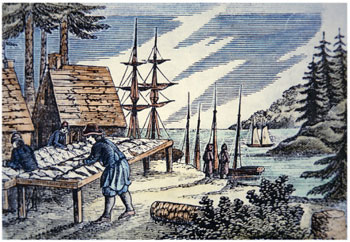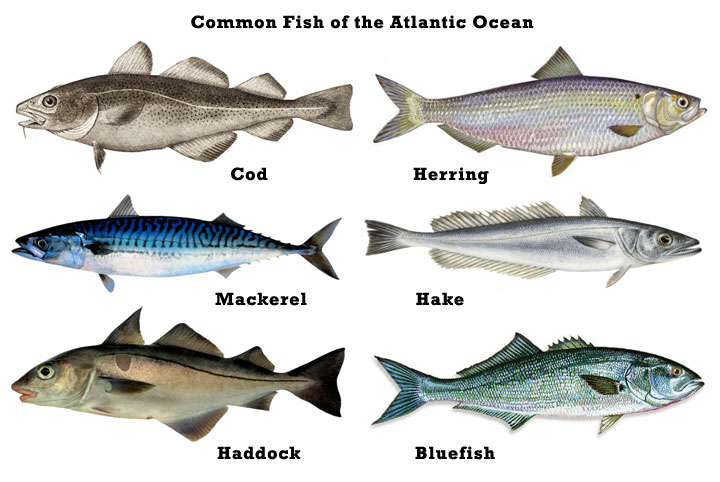 The Atlantic Ocean is the second-largest of the world’s oceanic divisions. With a total of about 41,100,000 sq mi (106,400,000 square kilometers,) it covers approximately 20% of the Earth’s surface and about 29% of its water surface area. The equator subdivides it into the North Atlantic Ocean and South Atlantic Ocean.
The Atlantic Ocean is the second-largest of the world’s oceanic divisions. With a total of about 41,100,000 sq mi (106,400,000 square kilometers,) it covers approximately 20% of the Earth’s surface and about 29% of its water surface area. The equator subdivides it into the North Atlantic Ocean and South Atlantic Ocean.
1 (square mile) = 2.58 square kilometers
The average depth of the Atlantic is 12,880 ft (3,926 meters). The deepest point, Milwaukee Deep at 27,500 ft (8,380 meters) is in the Puerto Rico Trench. The Atlantic’s width varies from 1,538 nautical miles (2,848 km) between Brazil and Sierra Leone to over 3,450 nautical miles (6,400 km) in the south.
 The oldest known mention of “Atlantic” is in The Histories of Herodotus from around 450 BC. He called it Atlantis thalassa in Greek and in English, Sea of Atlas. (Atlas was one of the earlier Greek Gods, called Titans, who held up the heavens and also oversaw astronomy and navigation.)
The oldest known mention of “Atlantic” is in The Histories of Herodotus from around 450 BC. He called it Atlantis thalassa in Greek and in English, Sea of Atlas. (Atlas was one of the earlier Greek Gods, called Titans, who held up the heavens and also oversaw astronomy and navigation.)
The Atlantic has contributed significantly to the development and economy of surrounding countries. Besides major transatlantic transportation and communication routes, the Atlantic offers abundant petroleum deposits in the sedimentary rocks of the continental shelves.
FISH OF THE ATLANTIC:
The Atlantic hosts the world’s richest fishing resources, especially in the waters covering the shelves. The major fish are cod, haddock, hake, herring, bluefish and mackerel. The sheer number of these fish that used to inhabit the Atlantic’s waters has been greatly diminished in the age of commercial/industrial fishing, which by some estimates have been depleted by 90%.
WHALING:
In the 1650’s and 1660’s, whaling was a very important energy industry as whale blubber was boiled down into oil to fire lamps. In those early day, shore whaling was common along the Northern Atlantic Coast of North America. Instead of going to the sea in search of whales, fisherman would wait to capture whales when they came near the shore or beached themselves. Near-shore whale populations were soon depleted and whalers had to go to sea by the 1700’s, but whaling still accounted for 15% of New England’s exports before the American Revolution.
COD FISHING:
Cod Fishing also played an important role in developing the economy of colonial New England, as these fish were abundantly plentiful.
 COD also played a role in the liberation of the United States from its dependence on Britain. Besides whaling, colonial New England was largely built by the trade of cod and the production of rum from Caribbean molasses. By the 18th century New England’s growing economic autonomy was troubling the English government. When England attempted to exert more control over colonial trade, it did much to incite the resentment that eventually led to the American Revolution. Ironically, by the time the colonies had converted themselves into a nation, cod and other aquatic resources were already exploited to the extent that North American ecosystems more nearly resembled those of Europe than their own pre-colonial abundance.
COD also played a role in the liberation of the United States from its dependence on Britain. Besides whaling, colonial New England was largely built by the trade of cod and the production of rum from Caribbean molasses. By the 18th century New England’s growing economic autonomy was troubling the English government. When England attempted to exert more control over colonial trade, it did much to incite the resentment that eventually led to the American Revolution. Ironically, by the time the colonies had converted themselves into a nation, cod and other aquatic resources were already exploited to the extent that North American ecosystems more nearly resembled those of Europe than their own pre-colonial abundance.
*All good info, could be abbreviated and maybe expanded with some thoughts about our coexistence with the Atlantic as an industrial resource. Maybe also introduce weather systems of the Atlantic as a segue to Wind and Weather EG. Could be important to expand on the differences between the N. & S. Atlantic e.g. fish, weather, resource use, history, etc.
Click HERE to learn more about Sea Life.

